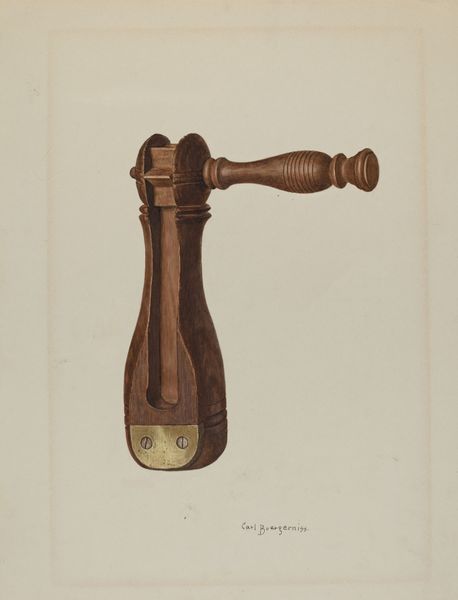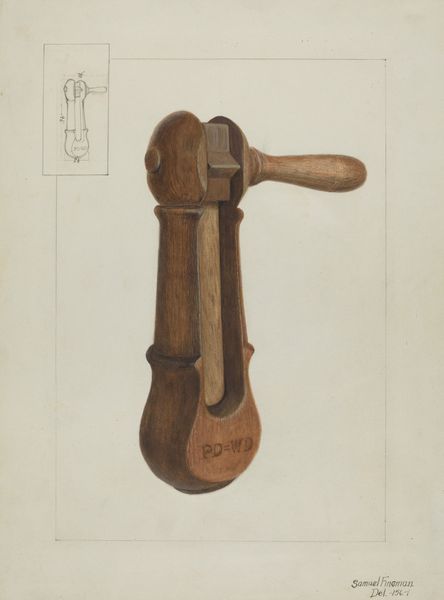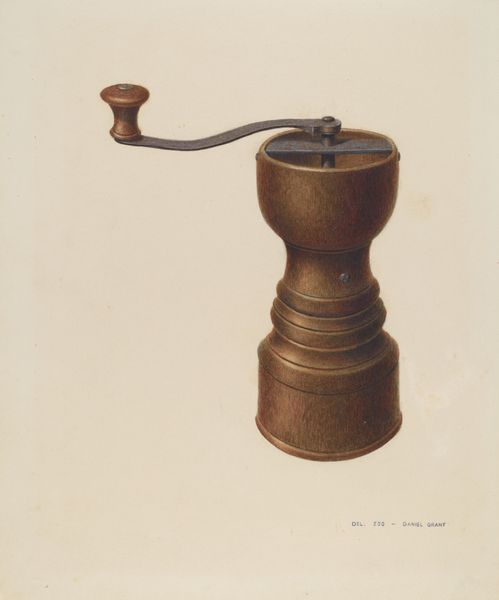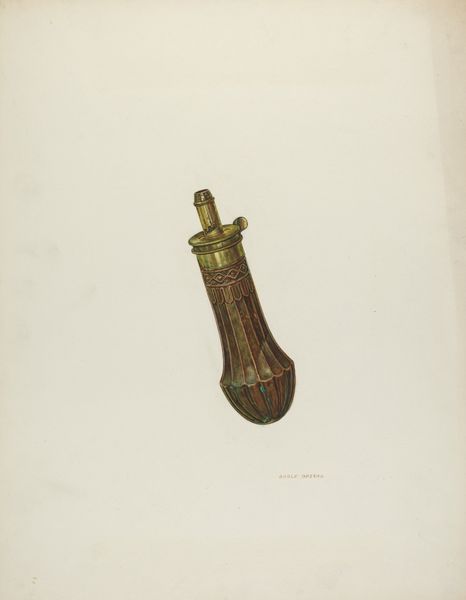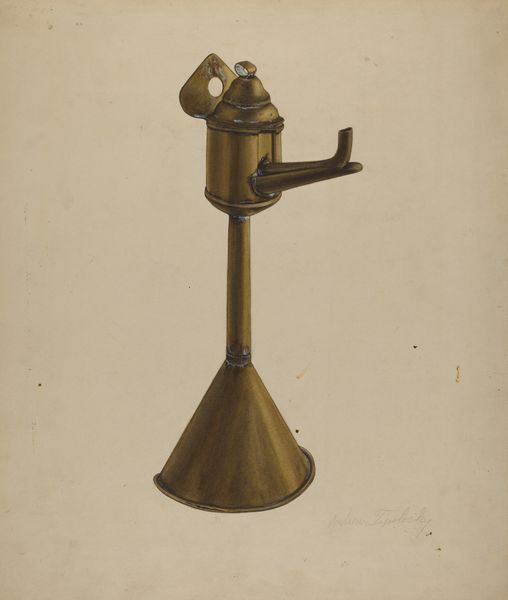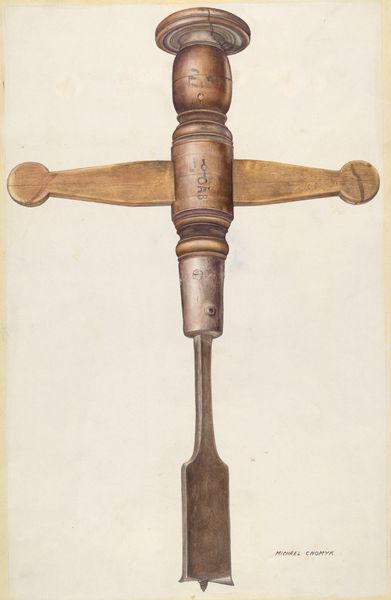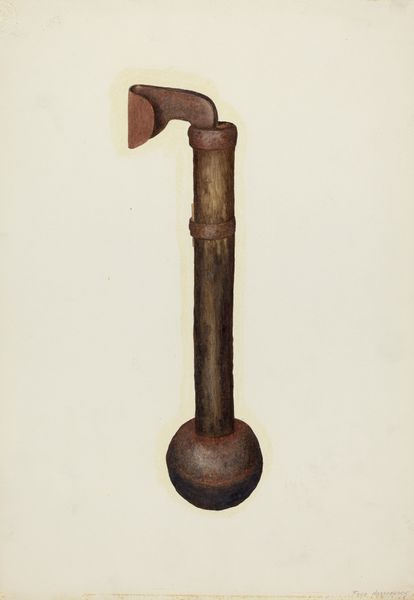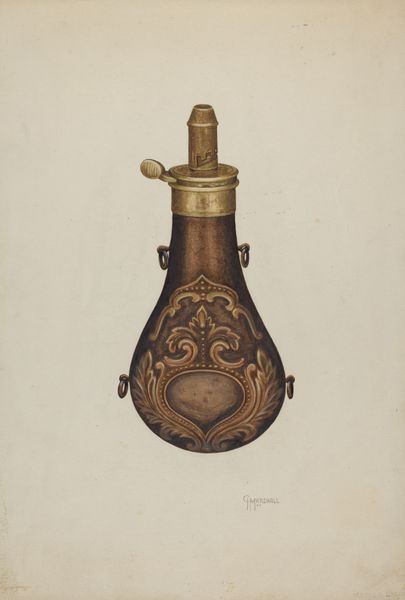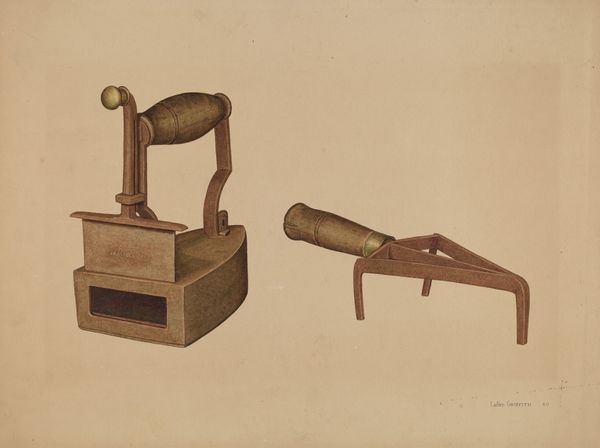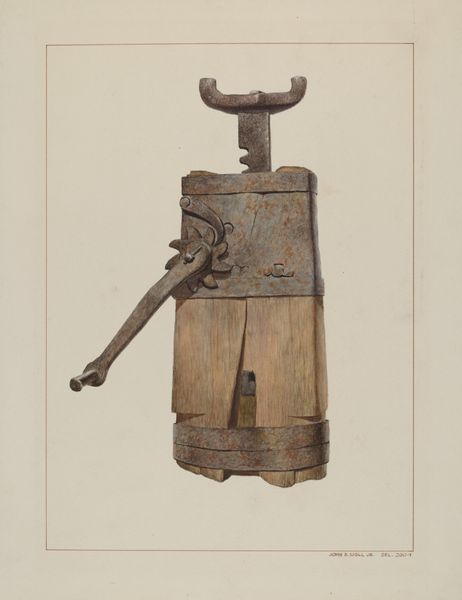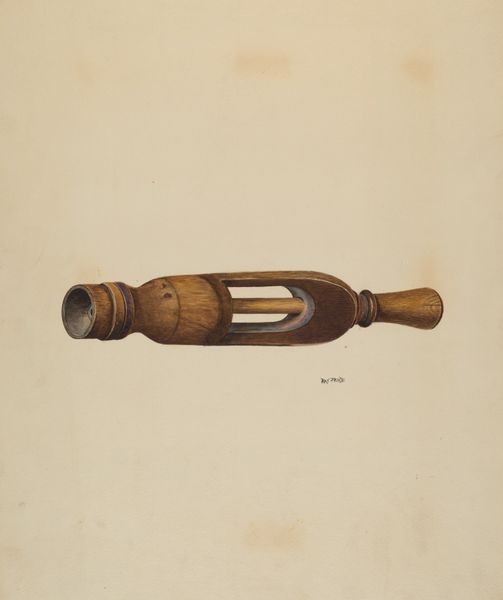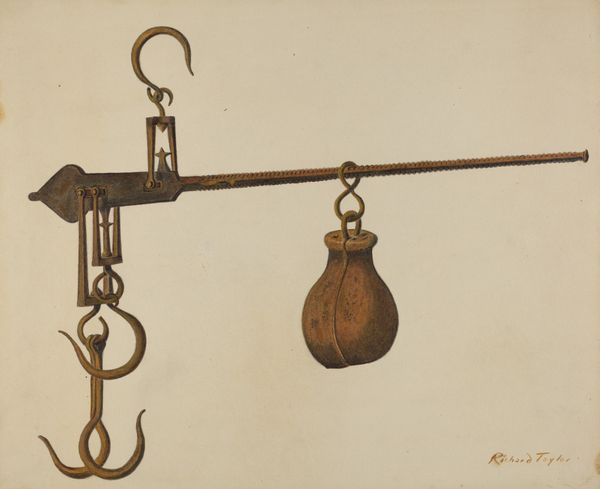
drawing, mixed-media
#
drawing
#
mixed-media
#
academic-art
#
regionalism
#
realism
Dimensions: overall: 38 x 30.8 cm (14 15/16 x 12 1/8 in.)
Copyright: National Gallery of Art: CC0 1.0
Curator: The piece before us, "Police Rattle," dates to around 1938. It's a mixed-media drawing by Ray Price. What's your initial reaction? Editor: My eye is drawn to the craftsmanship, the tonal range suggesting various textures. The interplay of wood and metal. There's a stillness, an almost photographic quality, and perfect symmetrical rendering that feels distinctly studied and refined. Curator: It's fascinating to consider the object's original function versus its depiction here, stripped of context and purpose, prompting us to confront power dynamics and law enforcement’s role in maintaining social order, especially relevant in the late 1930s with the rise of union organizing and labor unrest. The "City Police" inscription and the number "397" transform a utilitarian object into a marker of authority, control, even surveillance. Editor: Indeed. If we isolate the handle—the repeated circular grooves create rhythm—and note how light caresses the polished wood, we observe the artist's engagement with form, material, and light, reducing the object to its basic visual components. I agree, however, that the inscription complicates that purity by suggesting purpose and history. Curator: I find myself questioning the artist’s intentions. Was Price glorifying authority? Or was he subtly critiquing it? These objects can be quite unnerving given what we now know about historical biases in the enforcement of law, where marginalized groups often bore the brunt of discriminatory practices. The work, while aesthetically appealing in some respects, evokes mixed feelings given its possible historical associations. Editor: True, such a literal, unembellished rendering directs focus away from interpretive gesture and places emphasis on design elements alone, or so it seems, and yet its very straightforwardness makes you question more what is missing than what is depicted, like social context. But doesn’t the very act of representing a symbol of authority prompt scrutiny? Curator: Exactly. Looking at this piece has reminded me about the complexities inherent in art that reflects institutional power. Art can illuminate systems, or perpetuate them, and often does both at the same time. Editor: Ultimately, considering this piece and analyzing its parts highlights just how an image can spark conversations around authority, history, and design simultaneously. It allows a variety of readings of a single isolated object.
Comments
No comments
Be the first to comment and join the conversation on the ultimate creative platform.
